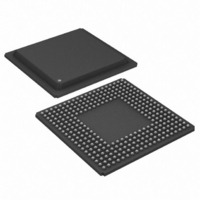DS21FT42 Maxim Integrated Products, DS21FT42 Datasheet - Page 57

DS21FT42
Manufacturer Part Number
DS21FT42
Description
IC FRAMER T1 4X3 12CH 300-BGA
Manufacturer
Maxim Integrated Products
Datasheet
1.DS21FT42.pdf
(114 pages)
Specifications of DS21FT42
Controller Type
T1 Framer
Interface
Parallel/Serial
Voltage - Supply
2.97 V ~ 3.63 V
Current - Supply
225mA
Operating Temperature
0°C ~ 70°C
Mounting Type
Surface Mount
Package / Case
300-BGA
Lead Free Status / RoHS Status
Contains lead / RoHS non-compliant
Available stocks
Company
Part Number
Manufacturer
Quantity
Price
DS21FT42/DS21FF42
TRANSMIT SIDE
Via the THSE control bit (CCR4.2), the framer can be set up to take the signaling data presented at the
TSIG pin and insert the signaling data into the PCM data stream that is being input at the TSER pin. The
user has the ability to control which channels are to have signaling data from the TSIG pin inserted into
them on a channel–by–channel basis by setting the TPCSI control bit (CCR4.1) high. When TPCSI is
enabled, channels in which the TCHBLK output has been programmed to be set high in, will not have
signaling data from the TSIG pin inserted into them. The hardware signaling insertion capabilities of the
framer are available whether the transmit side elastic store is enabled or disabled. If the elastic store is
enabled, the backplane clock (TSYSCLK) can be either 1.544 MHz or 2.048 MHz.
14.
PER–CHANNEL CODE (IDLE) GENERATION AND LOOPBACK
Each framer in the DS21Q42 can replace data on a channel–by–channel basis in both the transmit and
receive directions. The transmit direction is from the backplane to the T1 line and is covered in Section
15.1. The receive direction is from the T1 line to the backplane and is covered in Section 15.2.
15.1 TRANSMIT SIDE CODE GENERATION
In the transmit direction there are two methods by which channel data from the backplane can be
overwritten with data generated by the framer. The first method which is covered in Section 15.1.1 was a
feature contained in the original DS21Q41 while the second method which is covered in Section 15.1.2 is
a new feature of the DS21Q42.
15.1.1
Simple Idle Code Insertion and Per–Channel Loopback
The first method involves using the Transmit Idle Registers (TIR1/2/3) to determine which of the 24 T1
channels should be overwritten with the code placed in the Transmit Idle Definition Register (TIDR).
This method allows the same 8–bit code to be placed into any of the 24 T1 channels. If this method is
used, then the CCR4.0 control bit must be set to zero.
Each of the bit position in the Transmit Idle Registers (TIR1/TIR2/TIR3) represent a DS0 channel in the
outgoing frame. When these bits are set to a one, the corresponding channel will transmit the Idle Code
contained in the Transmit Idle Definition Register (TIDR). Robbed bit signaling and Bit 7 stuffing will
occur over the programmed Idle Code unless the DS0 channel is made transparent by the Transmit
Transparency Registers.
The Transmit Idle Registers (TIRs) have an alternate function that allow them to define a Per–Channel
LoopBack (PCLB). If the TIRFS control bit (CCR4.0) is set to one, then the TIRs will determine which
channels (if any) from the backplane should be replaced with the data from the receive side or in other
words, off of the T1 line. If this mode is enabled, then transmit and receive clocks and frame syncs must
be synchronized. One method to accomplish this would be to tie RCLK to TCLK and RFSYNC to
TSYNC.
57 of 114












